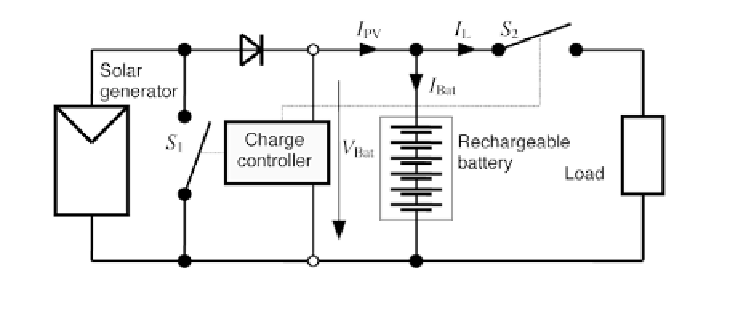Environmental Engineering Reference
In-Depth Information
Figure 4.47
Photovoltaic Battery System with Series Charge Controller
still causes losses of 1.44 W. If the photovoltaic generator voltage is monitored
in addition to the battery voltage, the blocking diode can be omitted and the
forward losses reduced. In this case, the charge controller must open the switch
S
1
if the solar generator voltage falls below the battery voltage.
The parallel charge controller is the most commonly used type of charge
controller. If the battery is fully charged, the charge controller short-circuits
the solar generator across switch S
1
. The solar generator voltage falls to the
voltage drop across the switch (<1 V). The blocking diode avoids reverse
currents from the battery across the switch. If the generator is in the regular
mode of operation, the short circuit does not cause any problems; however, if
the solar generator is partially shaded and thus not irradiated homogenously,
the short circuit conditions can strain the shaded cells very significantly.
Individual battery cells of large battery systems can be severely strained due
to small differences between the cells. These cells age faster, and if one cell fails,
other cells will be affected. Therefore, battery management systems that not
only monitor the voltage of the whole battery unit but also the voltage of single
cells should be used for large battery systems for optimal battery protection.
Besides these relatively simple battery systems with a photovoltaic
generator, a battery, charge controller and a load, more complex systems exist.
Figure 4.48
Photovoltaic Battery System with Parallel Charge Controller



